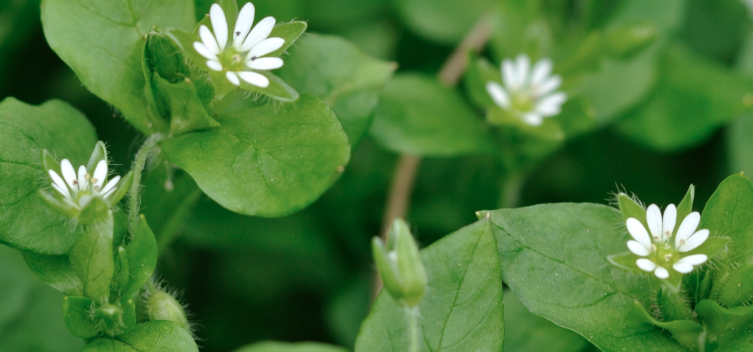Over the last month, I’ve noticed a plant friend from early Spring starting to emerge from their summer slumber. Chickweed, or stellaria media, is a cooler weather wild edible. It grows prolifically and spreads, though can be pulled easily from the roots. As many wild edibles, it is considered a weed to those who care about their perfectly grassy lawns. You can easily identify Chickweed by its light green color, entangled sprawling leggy stems, and delicate star-shaped white flowers (the flowers bloom only in Spring).
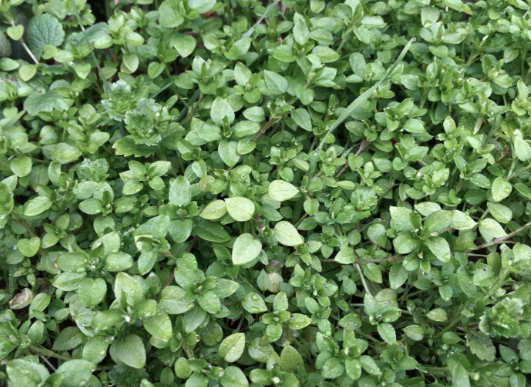
The leaves are a wide teardrop shape, lack teeth, and don’t have their own stems–they attach right to the stalk. Though leaves can be variable in pattern on the stem, I tend to notice that they somewhat mimic the mint family in that leaves tend to be two by two, and sets run opposite of each other. Chickweed has a round stem and are covered in small, delicate hairs. Stems can get up to 20 inches long, though they trail and intertwine on the ground to create a mat.
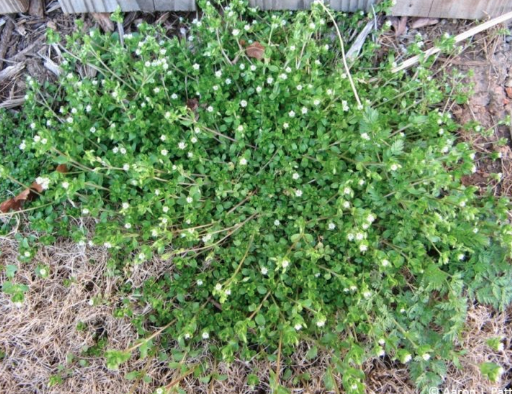
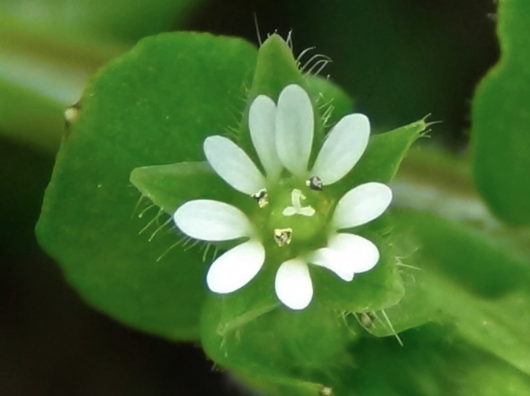
Chickweed also grows from the roots with nodes. In the Spring, Chickweed’s small white flowers have 10 petals shaped like narrow tear drops, and grow from the upper leaf axils. The stamen is a bright yellow. When flowers mature, they drop into almost a tear-drop seed bundle, held in a cluster by a small stem. Chickweed is native to Europe and is naturalized in the United States, and considered somewhat invasive.
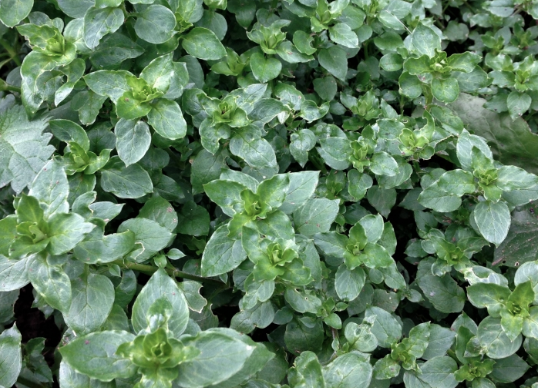
Though I’ve had a hard time getting Chickweed out of hoop houses filled with mesclun salad mixes or baby beet greens, I love it! Not only is Chickweed edible, it tastes pretty good too. It is considered quite nutritious in vitamins A, B, and C, and can easily substitute basil in a pesto. It has a light, crisp, green taste, not much different than salad. I like to add it straight to salads, mix it in with a pesto, add it on top of pizzas, or eat straight from the earth.
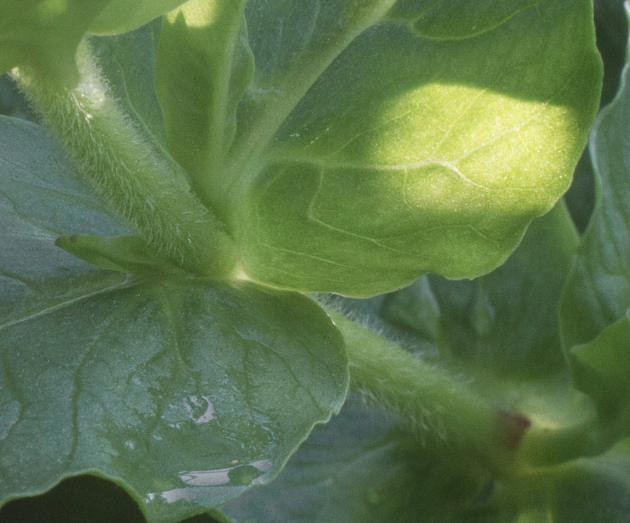
Here are some recipes to explore using Chickweed:
General Chickweed Cooking Ideas
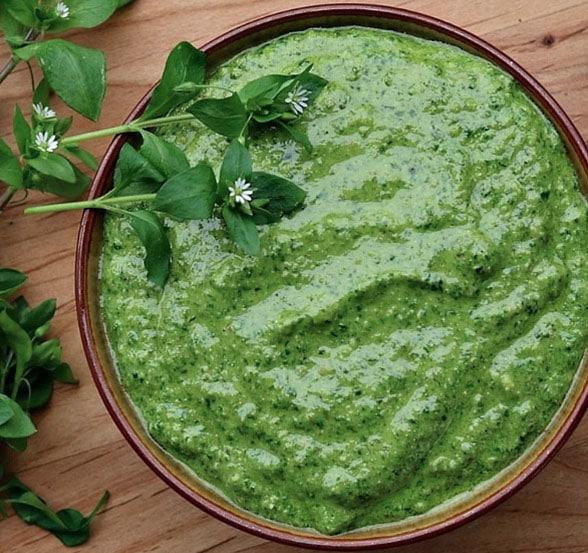
Please enjoy this Springtime plant coming back this Fall!

